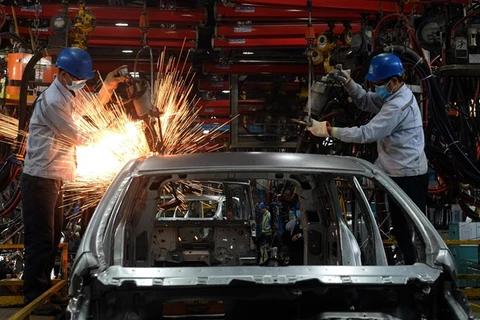Hanoi (VNA) – Promoting intra-bloc trade and investment for a cohesive and responsive Association of Southeast Asian Nations (ASEAN) is one of the much-discussed topics among ASEAN officials, researchers, and policymakers.
ASEAN is one of the most dynamic regions in the world with an economic growth rate of 5.4 percent, higher than the world’s average of 4 percent, said Aladdin D. Rillo, Deputy Secretary-General for the ASEAN Economic Community, ASEAN Secretariat. He added that it is also the fifth largest global economy with gross domestic product (GDP) reaching about 3 trillion USD in 2018,
In terms of trade, ASEAN was the fourth largest economy in the world with a total value of more than 700 billion USD.
Regarding foreign direct investment (FDI), FDI growth in ASEAN was about 4.4 percent, much higher than other developing economies, making ASEAN the third largest FDI recipient in the world, he said.
However, intra-bloc trade currently accounted for only 23 percent of the bloc's trade, which was relatively low compared to other regions, according to the ASEAN Deputy Secretary-General.
The intensity of intra-bloc trade has also decreased significantly in recent years, he added.
Saysana Sayakone, head of Laos’ Senior Officials for ASEAN (Lao SOM), said intra-bloc cooperation potential is enormous. The bloc has put forth important initiatives to promote intra-bloc trade such as the ASEAN Free Trade Area in 1992.
ASEAN is working towards multilateral trade agreements like the Regional Comprehensive Economic Partnership (RCEP) and economic deals with ASEAN 1 partners (Australia, Canada, China, India, Japan, the Republic of Korea, New Zealand, Russia, the US, and the European Union), he added.
He noted that while tariff barriers have been reduced in ASEAN, non-tariff measures are on the rise, with over 9,840 such measures adopted so far. The Lao official said the intra-bloc trade can be improved by reducing policy and non-tariff barriers.
Vo Chi Thanh, Chairman of the Vietnam National Committee for Pacific Economic Cooperation, said ASEAN countries are currently making every effort to overcome these difficulties by promoting the ASEAN Single Window and RCEP.
In the foreseeable future, ASEAN should focus on services, logistics, digital economy, and the creation of an ecosystem for startups, he said.
ASEAN countries also need to create a foundation for small-and medium-sized enterprises, and make it easier for them to access finance, loans and human resources, as well as help businesses to protect themselves against fluctuations and attract foreign investment, he recommended.
Former Deputy Foreign Minister Pham Quang Vinh said in order to promote intra-regional trade, it is necessary to consider trade diversity among member countries.
ASEAN states share a lot of similarities, which should be the cooperation foundation in the future, he added.
According to Vinh, ASEAN should look for fields with potential in intra-bloc trade cooperation based on the mutual supplementary features of ASEAN economies./.
VNA
























